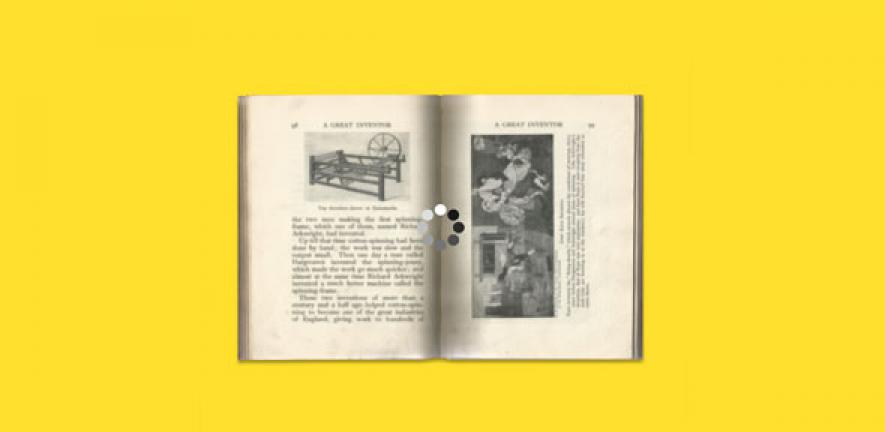
The e-book has made continued inroads into the publishing world but the printed book has defied predictions of its death. Research by Professor John Thompson focuses on the challenges facing the publishing industry as it embraces the opportunities afforded by the digital revolution.
The e-book has made continued inroads into the publishing world but the printed book has defied predictions of its death. Research by Professor John Thompson focuses on the challenges facing the publishing industry as it embraces the opportunities afforded by the digital revolution.
By looking at what is happening inside the industry, we can see that some of the fears about the future of the publishing industry were misplaced.
Professor John Thompson
In his book Merchants of Culture, Professor John Thompson recounts a conversation with the head of media asset development at a large US publishing house. The topic is the impact and future of digital publishing.
His interviewee, anonymised as Steve, has come from the music industry, where he has seen the digital revolution disrupting traditional models. Tasked with shaping the future of a leading publishing house, Steve is struggling to convince his colleagues to think differently about books and to embrace the digital revolution. He says: “A book is not a book. Books are categories. Books are types. Books are different styles of things.”
Thompson is interested in the changing structure of the book publishing industry as the digital revolution transforms the processes and products of the publishing business in ways that are both visible and invisible to the consumer. The outcome of his present research will be a book that is due to be published in 2017, in which he will describe the volatile, contested environment responsible for delivering texts to millions of readers in an ever-increasing range of formats.
At the heart of Thompson’s conversation with Steve is a discussion about the thousands of files that are the publisher’s most valuable assets – literally its lifeblood. Having digitised its backlist of top sellers, the company holds an archive of 40,000 titles, a figure that is constantly expanding. How these files are archived, managed and protected so they can be delivered to readers in the most suitable formats is vital to the continuing health of the publishing house. The archiving process has been far from simple, requiring the retrieval of files from printers and opening up heated debates about copyright. And the sheer flexibility offered by digitisation introduces new challenges.
Steve explains that, while paper books are relatively simple to deliver (“you’re delivering tree”), the delivery of digital goods is much more complicated. “The thing that people always hoped was the digital world would get simpler and it’s actually a whole lot more complicated because your end result isn’t the same. The end result is a database, the end result is a PDF, it’s an image-based PDF, it’s an XML file, it’s an ad-based, Google-search-engine toolset – we’re going to have many more properties digitally than we possibly could have physically. We have seven physical properties [for our books]… and online we have hundreds of formats and types and styles.”
Few of these challenges were foreseen in the feverish hype of the 1990s that the days of the book were numbered. Paper texts were clunky and old fashioned; digital versions were smart and sleek.
Many new start-ups were launched, seeking to create new forms of the book that exploited the multimedia potential of new technologies. But, despite the hype, sales of e-books remained sluggish and many start-ups failed.
E-books finally began to take off in autumn 2007 when Amazon launched the Kindle, which allowed readers to download books and other content directly onto their devices. Sales of e-books soared: in 2010 one large publisher saw its e-book sales rise from 12% to 26% of its revenue over Christmas week.
Industry pundits had predicted that e-book sales would be driven by business books and by businessmen, but it didn’t work out like that – far from it. “The real areas of growth were commercial fiction and genre fiction – categories like sci-fi, mysteries and crime, romances and thrillers,” says Thompson. “This was a revolution being driven largely by women reading commercial and genre fiction on their Kindles.”
Much has happened since Thompson’s interview with Steve took place in New York, but Thompson has maintained the many publishing contacts who give him first-hand access to the latest industry developments. He is now mid-way through an ambitious project to revisit publishers on both sides of the Atlantic in order to discover “what is happening while it’s happening” in an industry that suddenly finds itself at the centre of a major disruptive transformation.
From 2008 to 2012, e-books grew from less than 1% of total US trade sales to over 20%; this was phenomenal growth in an industry where overall sales remain largely static. Many people working in the industry worried that publishing would go the same way as the music industry. But then something dramatic happened: the growth slowed and levelled off at around 22%, forming a classic S-curve. “When you dig beneath the surface, however, you see that the simple S-curve is misleading because it conceals a great deal of variation between different kinds of books. In the case of romance fiction, the growth begins to level off at around 60%, whereas many categories of nonfiction plateau at between 15% and 25%,” says Thompson.
“By looking at what is happening inside the industry, we can see that some of the fears about the future of the publishing industry were misplaced. Many observers thought that developments in book publishing would follow those in the music sector but that hasn’t happened. There isn’t a single model that describes the impact of the digital revolution on the creative industries – there are multiple models, and the impact varies from industry to industry and sector to sector.”
While no one can be sure how the pattern of e-book sales will develop in the future, the digital revolution has already had an enormous impact on the way the publishing industry works. In what Thompson calls “the hidden revolution”, the processes involved in taking a text through the supply chain, from author to reader, have been thoroughly transformed. Print-on-demand means that a book never goes out of print, and with the advent of self-publishing anyone can publish.
“This means that the numbers of books being published, and the number available, have risen dramatically. But how do readers get to know about what’s out there? New platforms have emerged to supplement the traditional model of the newspaper review,” he says.
The rise of Amazon has played a major part in these developments. “Amazon is part and parcel of the digital revolution. The company started in a garage as a classic internet start-up and its ascendancy took everyone by surprise,” says Thompson. Publishers have benefited from Amazon’s growth but they now find themselves locked in a power struggle with the retail giant, who controls around 67% of all e-book sales in the USA and over 40% of all new book unit sales, print and digital.
Relations have become increasingly fraught, he says. Publishers have tried to retain control of pricing by selling e-books on an ‘agency model’, which allows them to fix the price, while Amazon has used its growing market share to try to extract better terms of trade from publishers. The struggle ebbs and flows and at times becomes vicious, as it did during the 2014 standoff between Amazon and Hachette (one of the Big Five US trade publishers).
Thompson is determined to get to grips with the fine detail of what goes on behind the scenes in the day-to-day publishing processes. “Fifteen years ago I knew little about trade publishing, but we can only understand how this industry works and how it’s changing by immersing ourselves in it and looking carefully at what happens when new technologies collide with the old world of the book.”

The text in this work is licensed under a Creative Commons Attribution 4.0 International License. For image use please see separate credits above.




